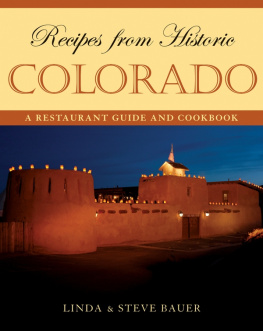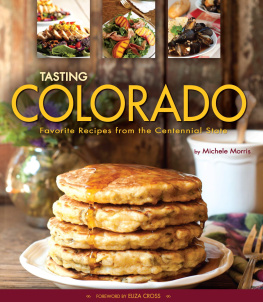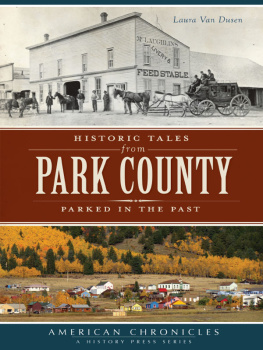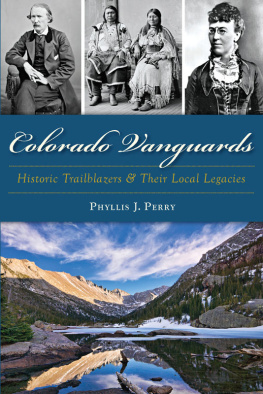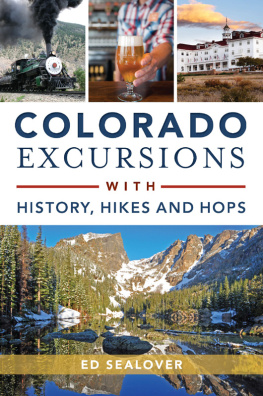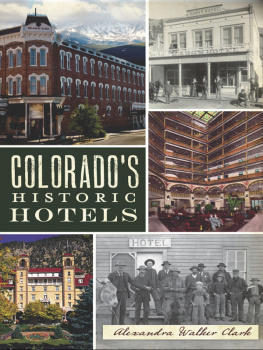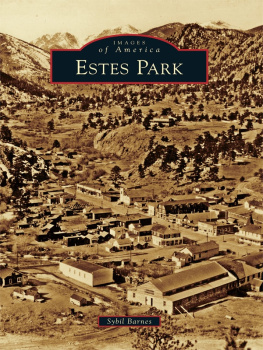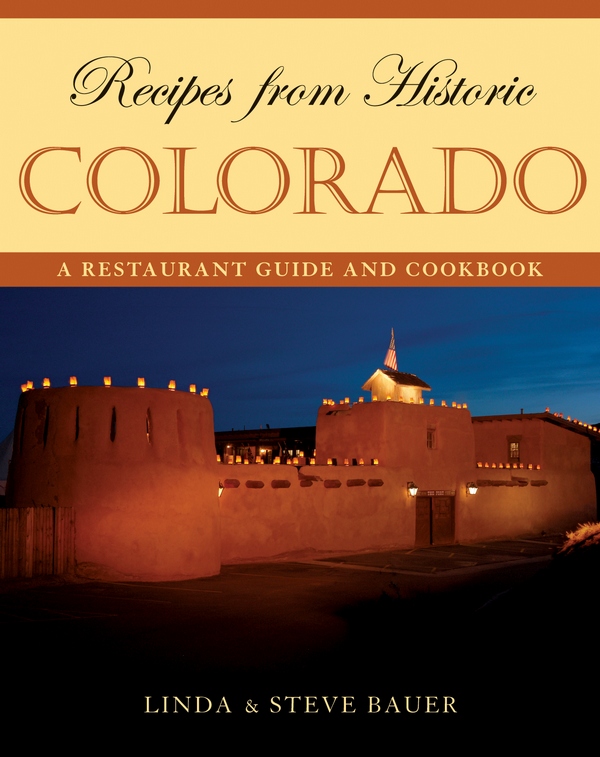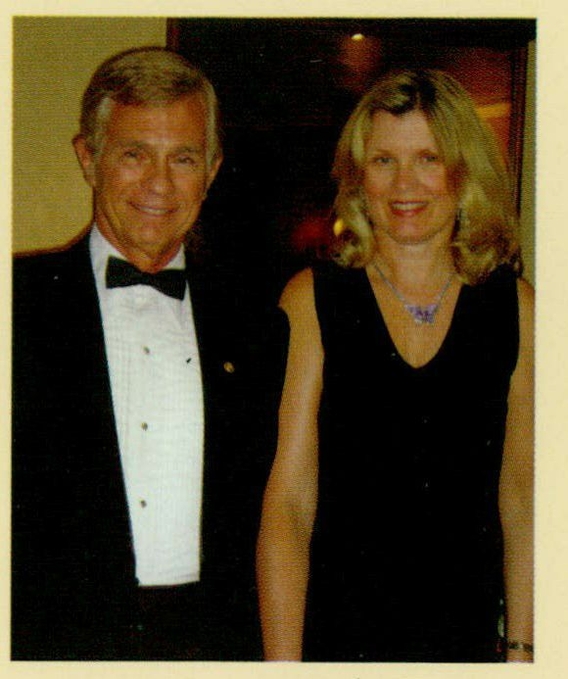ABOUT THE AUTHORS
LINDA BAUER is the author of The American Sampler Cookbook, The New American Sampler Cookbook, and The Great American Sampler Cookbook. She has appeared on The Today Show, CBS This Morning, and CNN, and is a member of the International Association of Cooking Professionals.
STEVE BAUER, U.S. Army, retired, served as a military aide to five presidents and is the author of How to Sell to the United States Government and At Ease in the White House.
Linda and Steve are coauthors of Recipes from Historic America, Recipes from Historic Texas, and Recipes from Historic Louisiana. They live in The Woodlands, Texas.
TAYLOR TRADE PUBLISHING
An imprint of
The Rowman & Littlefield Publishing Group, Inc.
4501 Forbes Boulevard, Suite 200
Lanham, Maryland 20706
www.rlpgtrade.com
Distributed by
NATIONAL BOOK NETWORK
1-800-462-6420
Cover photo courtesy of The Fort Restaurant,
Morrison, Colorado
Colorado has long been known for its scenic mountain beauty, but now, thanks to this wonderful new book, travelers can explore Colorados equally exciting culinary adventures. From the worlds most famous ski resorts to quaint Victorian mining towns, from Colorados hip, young capital city of Denver to the wineries of the Western slope, Colorados culinary scene is soaring as high as the Rocky Mountains, and this book will let you hit the trail to great dining experiences.
Rich Grant, Denver Metro Convention and Visitors Bureau
From some of Denvers and Colorados oldest dining establishments to new favorites, this book captures the innovative culinary style of the New Westone bite at a time.
John Hickenlooper, mayor of Denver
Colorado pioneers have always had an innovative history in the use of recipes, preservation, and food storage due to our unique climate. The only fresh fruit available to Silverton miners at 10,000 feet elevation was rhubarb, a predominant ingredient in such foods as smoked elk jerky, salted trout, and other provisions, which could then be placed in the root cellar during the long winter months. Recipes from Historic Colorado captures the essence of Colorado cooking.
Randall H. Lortscher, contributor, Junior League of Denvers
Crme de Colorado Cookbook
THE BROWN PALACE HOTEL
The red granite and sandstone walls of The Brown Palace have watched more than a century of Colorado and Denver history develop. The city was a mere 34 years old when Henry C. Brown opened the doors of his monument to himself in August 1892. It was a braggart city built by men who had made fortunes based on the gold and silver drawn from the mountains they then viewed from mansions on Capitol Hill where Brown had first homesteaded. They welcomed the new, elegant locale in which to conduct their business deals. Their wives took tea and their daughters danced at lavish balls.
It was fittingly a palace for The Queen City of the Plains, as Denver dubbed itself. Inside the hotel designed by architect Frank E. Edbrooke, the eight-story atrium, its pillars and wainscoting of pale golden onyx from Mexico reflecting the pastel shades of the stained glass ceiling, rivaled the grandest of hotels back East. A massive fireplace, the mantel of which was supported by two solid pillars of onyx, was a welcome amenity when the winter winds howled down from the snowcapped peaks to the west.
Through the years, The Brown Palace has seen it allboom times and depressions, peace and war. If the walls could talk, what stories they would tell of love and betrayal, success and failure, happiness and despair.
Emperors, kings, and presidents have been closeted here. Royal queens and the goddesses of stage and screen have primped in these rooms. We can only imagine some of their stories. Others we know.
Teddy Roosevelt was the first president to stop at The Brown Palace Hotel. He came to Colorado to hunt bear in the spring of 1905. He spoke to businessmen who paid only $10 to attend. Perhaps this was the prelude to smoke-filled rooms. Fifteen hundred cigars were smoked during the event.
President and Mrs. Eisenhower were the most frequent First Family to visit The Brown Palace. It served as his pre-campaign headquarters in 1952, and they spent many of their summer vacations here. In 1955, President Dwight D. Eisenhower had a travel allowance of $40,000 per year. A reporter estimated that an eight-week vacation in Denver would cost $25,000, including lodging and meals for his staff and Secret Service agents. To commemorate their many visits, the former Presidential Suite was renamed the Eisenhower Suite in 1980. A wayward golf ball Ike hit while practicing in the room made the dent in the fireplace mantel. The dent remains today. Eisenhower stories are recounted during the twice-weekly historical tours.
A report during President Hardings stay in July 1923 said that the White House for a few hours is on the eighth floor of The Brown Palace Hotel, and it will hold this temporary site until the party resumes its western jaunt at 1:30 oclock this afternoon.
In the 1890s, a German count who had been banned from home over a small indiscretion ran out of funds while living it up in the United States. He worked as a bookkeeper at The Brown Palace for over a year. In 1903 Count DAgreneff, a Russian nobleman, worked as a barber at the hotel and shaved President McKinley when he visited Denver. Another royal employee was Baron Gottfried von Kroenberger, a WWI ace for Germany who flew with Von Richtofen. He was head waiter when the hotel opened the Palace Arms in 1950.
Sun Yat Sen, just prior to being appointed the first president of the New Republic of China in 1911, was in Denver raising money to free his countrymen from the Manchu Dynasty. While he was staying at The Brown Palace, the revolution broke out and a republic was proclaimed. Years later Dr. Sun Yat Sen was recognized in a special five-cent postage stamp issued July 7, 1942, to commemorate Chinas five-year resistance to WWII Japanese aggression.

